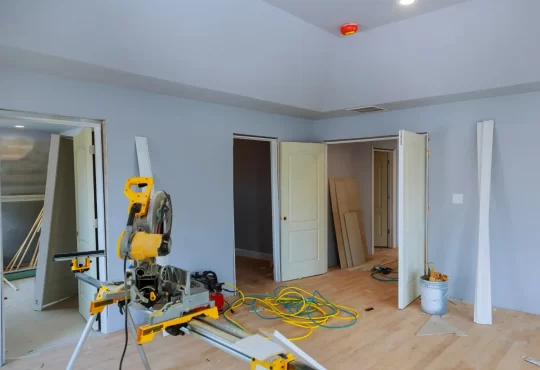
The key to drive a healthy truck and ensuring the driver’s safety and the longevity of the road is a pre-trip inspection of your truck. Conducting a pre-trip truck inspection is crucial to ensure the vehicle is free of defects and prepared for the road. Additionally, inspection after a long trip is necessary to spot any flaws. To maintain the safe functioning of your commercial vehicle, we give you a list of the top 10 points you should cross out with your checklist before thoroughly inspecting your truck.
-
Inspect All Signals and Lights
Check that all lights and signals, including interior and exterior, are in working order before leaving or returning from a trip. Marker lights, taillights, headlights, high beams, low beams, and turn signals fall under this category. A burned-out light can be unsafe and result in a sizable fine, while a dim light may signal an electrical issue. Additionally, while travelling a long distance to deliver goods, ensure your glove box is stocked with spare fuses.
-
Checking the tyre
A truck’s tyres are an integral part and need to be rotated frequently to guarantee even wear. A minimum of every 3,000 miles, rotate the tires. It is beneficial to have your tires balanced simultaneously as their rotation. When the tyre’s weight is distributed evenly around the axle, the tyre is said to be balanced. Unfortunately, your tyres go increasingly out of balance with each bump, pothole, and off-road trip. Uneven tyre wear and higher wear on your suspension are also possible effects of having an unbalanced pair of tyres. They can also generate vibrations on the road. Therefore, it’s a good idea to have your tires balanced while repairing or replacing them if necessary.
It’s also crucial to look for brakes, brake lines, and unusual wear while changing the tyres. This quick check will guarantee the truck’s ideal air pressure for improved stability and a more comfortable ride.
-
Check For Oil Leak
It becomes crucial to physically inspect your truck for oil leaks before starting it. Your leakage’s severity will depend on several factors; it cannot simply be determined by how much fluid has been left in a puddle. Instead, regular engine oil level checks will help determine how much oil your truck burns while operating. Listed below are vehicle oil leak warning signs.
- Dashboard low engine oil warning indicator.
- A pool of oil beneath the truck.
- Smoke is coming from the engine’s front.
- The engine is making a knocking noise.
- Heating of the engine
There are several ways to check for oil leaks.
- Keep a close eye on your oil dipstick to look for engine oil leaks. You lose oil if the level falls over time.
- Check the exhaust while driving to determine if any blue smoke is coming from it. Oil may be leaking into the engine itself if there is blue smoke.
- Take a sniff to check for burning oil after a drive. This can indicate that oil is dripping onto hot engine parts.
- Last but not least, look under the engine compartment for the typical oil marks or puddles, especially after it has been left alone all night.
-
Check mirror and mirror mountings.
Always taking trips, it is essential to ensure that the mirror glass is intact and firmly affixed to the truck’s frame and check for safe mountings and brackets.
Why is it crucial to adjust your truck’s mirrors?
- Driving while maintaining a regular scan of all of your vehicle’s mirrors is advised by safety experts. Every five seconds, quickly scan one mirror, beginning with the one on the driver’s side.
- You must always check your mirrors when your truck is towing any trailer. Ensure the trailer’s wheels don’t run into the curb when turning by keeping an eye on the mirror to the inside of the turn.
- To parallel park your truck correctly, you must use all three mirrors.
How to safely adjust the mirror?
- Move the rearview mirror gently to look straight out of the back windshield’s centre without turning your head. The idea is to be able to gaze swiftly from one route to the other without having to bend or shift your body.
- Find the side mirror adjustment levers or buttons. On the driver’s side door of many more recent versions, there is a little lever or joystick that electronically adjusts the side mirrors. Older models frequently need to adjust manually by pushing on the mirror or using a lever.
- First, adjust the side mirror on the driver. Adjust as necessary, then recline in the driver’s seat so that everything behind you and a small portion of your truck’s side is visible.
- Sit in the driver’s seat and check each mirror after they have all been adjusted, beginning with the driver’s side mirror. As you go along, you should take everything behind you in parts.
-
Check the oil and coolant level.
Coolant contamination is a factor in around 50% of on-highway truck engine failures that are prematurely lube-related. Therefore, complete oil analysis and engine fluid and coolant checks should be performed at every inspection session to avoid severe engine damage.
To lessen the likelihood of a mechanical breakdown, check your truck’s coolant and oil levels daily. When the engine is cool, first thing in the morning is an excellent time to check the oil and coolant. This is a simple and short procedure that will allow you to drive with confidence.
If you see that the oil level is below the “minimum” line, add 1 Litre of oil to the tank instead of more because you risk the chance of overfilling. Likewise, if the coolant level is marked low, top it off to the FULL mark—any more could result in overfilling. Since oil and coolant are Pressurised systems, the coolant container should only be opened once the engine has cooled. Match the Colour (pink or green) of the coolant currently in the truck if you need to fill it off from the supply. Use water only if it is essential.
-
Checking the windshield
The windshield of a truck is intended to protect the driver and passengers from the weather, support the roof in the event of a rollover or tumble, and prevent ejection. In your Tata Ace truck, the windshield is just as crucial to safety as the airbags and seatbelts. As a result, carefully inspect it for windshield cracks and clogged, damaged, loose, leaky, and twisted lines carrying windshield washer fluid. Check the circuit wires, terminals, and windshield washer control valve.
What may be the cause of the truck’s windshield creaking?
- Nobody can foretell when a windshield will crack or chip. Nevertheless, studies reveal that pressures such as temperature changes or even driving might result in windshield chip cracking.
- Your windshield’s existing chips may compromise the glass’s structural integrity. Your windshield may be subjected to enough pressure from potholes, speed bumps, and rough roads to develop a crack from a chip.
- In the summer, exposure to excessive heat can also result in a windshield chip splitting into vertical cracks. The air conditioner’s cooling effect might also cause a windshield crack to run horizontally.
Consequently, the practical approach to assure safety is to have those chips repaired before they develop into cracks. Avoid letting a broken windshield endanger your safety or interfere with your transportation activities.
In addition to these six fundamental parts, a complete vehicle inspection should also check the air system, ABS Light, Air Hoses, Doors, Fuel Tanks, Battery/Battery Box, Drive Shaft, Frame, Splash Guards, Straps, Chains, Lifts, Mounting Bolts, Locking Jaws, Kingpin, Release Arm, and Locking Pins of the Fifth Wheel for safety.




